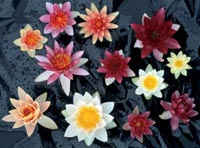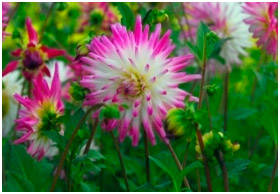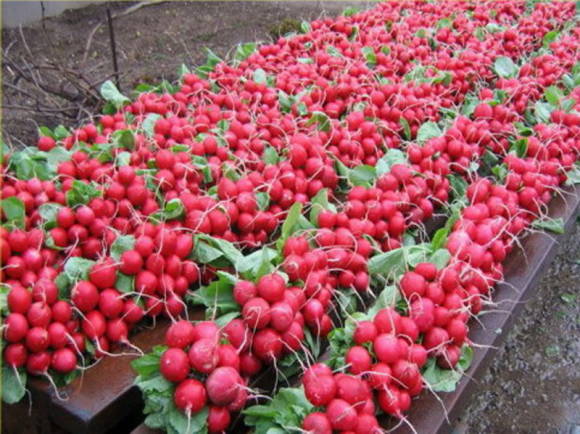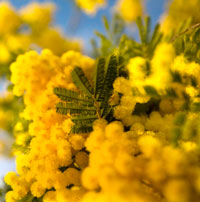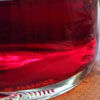In ancient times, lavender in the Mediterranean was used to prepare "Karabakhi" - lavender oil, which itinerant traders offered to housewives along with laurel. Lavender flowers were poured with olive oil and exposed to the sun. Then it was filtered and the lavender oil is ready!

What Lavender Essential Oil Is Made From
The raw materials for obtaining lavender essential oil are inflorescences with a peduncle no longer than 10 cm. They are cut during the period of mass flowering 10-12 days after the beginning of flowering. They are cut in calm and dry weather, since in rain and during strong winds, the oil yield decreases sharply. Raw materials are processed immediately after harvesting fresh. The yield can reach 6 t / ha. The essential oil is obtained by hydrodistillation, that is, it is distilled with steam. If the raw materials lie in heaps for a long time before processing, the oil content decreases and its quality deteriorates noticeably.
The content of essential oil in the raw material reaches 1.2-3.0%. Its main components are linalool, which is 15-40%, and linalyl acetate, the content of which can reach 50%. However, their ratio and the presence of some minor components can vary markedly depending on the origin of the sample, variety and growing conditions. In the practice of aromatherapists, an oil containing about 40% linalool is considered good.
Especially appreciated is the oil from France, which is characterized by a high content of esters. And the highest content of this substance is characteristic of wild-growing mountain lavender oil. It is received very little in France and the cost is very high.
In general, there is an interesting addiction, and not only in lavender. The more stress during the growth period, the higher the quality of the essential oil. Fatty overfed plants produce a large mass with a low content and mediocre quality of the coveted product.
The oil also contains camphor (2-3%), cineole (10%), borneol (3-4%), furfural, a-pinene, a-borneol, bornyl acetate, nerol, lavandulol, sabinene, b-myrcene, amyl alcohol , (+) - terpinen1-ol-4.
It is interesting: According to the international standard, lavender oil from real lavender, obtained by steam distillation, must contain from 30 to 60% esters, have an acid number of no higher than 8, and dissolve in 2-3 volumes of 70% alcohol. If lavender oil has been stored for a long time and incorrectly (in the light, in the heat), then the esters decompose with the formation of acetic acid and, accordingly, the aroma is greatly spoiled.
The leaves also contain essential oil, but camphor is present in large quantities in it and it does not at all resemble that familiar lavender scent, therefore, their presence is highly undesirable when harvesting and processing raw materials.
It is interesting: Scientists decided to find out how much oil evaporates into the air. In light of the growing interest in aromatherapy and aerophytotherapy, this question is not at all idle. Three lavender bushes in full bloom were covered with a special camera for two days. After analyzing the air passed through the chamber, we found out that from 0.7 to 3.76 ml of essential oil evaporate per day. In terms of per hectare, this amounted to 15.5 kg per day. And if we consider that lavender blooms for 15 days, then about 233 kg of essential oil can evaporate from 1 hectare, which is ... 4 times higher than the industrial harvest. So breathe deeper by the lavender bush and you will be healthy.

Properties of lavender oil
Currently, the range of applications of lavender oil in aromatherapy is very wide. It is included in the Pharmacopoeia of 16 countries of the world. Outwardly, it is used for burns with steam or boiling water. Studies by German doctors have shown that lavender essential oil not only accelerates healing, but also prevents the formation of excess connective tissue (scars). In this she, perhaps, has no equal.
When used internally, lavender oil has antispasmodic, soothing, antidepressant, antiseptic, diuretic, diaphoretic properties, enhances the secretion of gastric juice, intestinal motility.
Lavender oil is widely used for inhalation for bronchitis, pneumonia, hoarseness. It is active against streptococcus, Staphylococcus aureus, mycoplasma pneumonia, hemophilic, Pseudomonas aeruginosa and Escherichia coli and a number of viruses. All over the world, lavender oil is a raw material for drugs used to treat gangrene. In case of stomach ulcers, it is used as an analgesic, antiseptic and wound healing agent, 3-5 drops per piece of sugar 3 times a day.
Lavender has a stimulating and tonic effect on patients with functional disorders of the nervous system. It has a positive effect on the dynamics of the parameters of the cardiovascular system in the treatment and rehabilitation of patients with ischemic heart disease. And that is why it can be used in gerontorology to improve physical condition and increase efficiency in elderly people. In addition, the experiment has shown that lavender is able to “cleanse” the aorta from atherogenic plaques.
German aromatherapists have observed the normalizing effect of lavender oil on blood sugar.
It was found that lavender oil reduces the excitability of the central nervous system, contributes to the normalization of the functions of the autonomic nervous system. It is used for neuroses, general weakness, increased fatigue, bad mood, irritability, neurasthenia, skin diseases of nervous origin.
Lavender increases the level of corticosterone by 2 times, which is combined with an increase in the quantity and quality of work performed, improved attention, reduced errors, and increased memory for numbers.
Lavender has radioprotective properties. It is capable of increasing the body's radioresistance under prolonged exposure to low radiation doses, which is of great practical importance. Provides an immunoprotective effect by stimulating the B-link of immunity (accumulation of antibodies synthesizing cells in the spleen).
Lavender oil and lavender distillate are used for cosmetic preparations for acne, acne, eczema.
It is advisable to use it in combination with other oils or their compositions, as it is able to harmonize odors.
Lavender normalizes redox reactions by correcting the activity of the enzymes lactate dehydrogenase and malate dehydrogenase. It is able to correct enzymatic reactions: with the activity of enzymes associated with glycolytic processes, it increases the activity of redox enzymes.
Lavender has a pronounced anti-inflammatory activity, which is manifested in the normalization of the blood count (a decrease in stab neutrophils, an increase in the number of lymphocytes). Lavender's anti-inflammatory effect is attributed to its inhibitory effect on lipid-oxidizing enzymes. In the experiment, the number of alveolar macrophages in the bronchial lavage increases and their intracellular metabolism is activated.
Lavender relieves histamine and barium spasms in the experiment. The antispasmodic effect is manifested due to the main component of this oil - linalyl acetate. This property makes lavender a promising agent for the treatment of bronchial asthma and nonspecific inflammatory diseases with an asthmatic component.
Lavender is able to form complexes with lead cations and remove them from the body; under conditions of intoxication with salts of heavy metals for several days has a positive effect on the function of the central nervous system, liver, myocardium, blood and on the morphology of internal organs. These properties of lavender make it possible to use it for some occupational diseases.
Lavender increases the possibilities of adaptive reactions of patients with various pathologies to new climatic conditions, desynchronosis, magnetic disturbances and circadian rhythms.
On the example of patients with kidney tuberculosis, it has been shown that lavender oil normalizes hormonal status: reduces the increased level of thyroxine, cortisol, progesterone, estradiol; increases lowered insulin levels. The content of thyroxine, triiodothyronine, thyroxine-binding globulin, which were normal, did not change.
It relieves the suppressor T-lymphocyte function limitations developing during irradiation, leukopenia, erythrocytosis, increases the reserve hematopoietic capabilities of the bone marrow.
Contraindications: you cannot use essential oil in the first months of pregnancy and during chemotherapy treatment of malignant neoplasms!
Several Uses for Lavender Oil

Steam inhalation: boiling water is poured into a bowl with a wide neck, 2-3 drops of lavender oil are added and inhaled for 3-6 minutes.
For cooking lavender bath take 7 drops of essential oil on wear on an emulsifier (1-2 tablespoons of salt, bubble bath, 1 tablespoon of honey, 1 tablespoon of cream or fat milk). After that, everything is dissolved in a bath with water. Bath time - 30 minutes.
For rubbing take 10 g of base oil (peach, olive, almond oil) and 4 drops of lavender essential oil. Then rub into the sore spot or massage.
Fragrant lavender wine: for its preparation, 1 drop of lavender oil is stirred in a teaspoon of honey and dissolved in a glass (200 ml) of wine. Dioscorides prepared this kind of wine and called it "Styhaditis inos".



